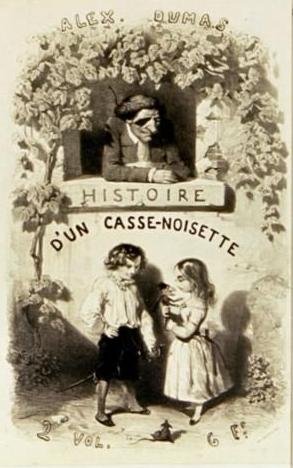On December 18, 1892, the world witnessed the first performance of Tchaikovsky’s ballet “The Nutcracker” at the Mariinsky Theatre in St. Petersburg, Russia. This iconic ballet, initially met with a lukewarm reception, has since become one of the most beloved and frequently performed ballets globally, particularly during the Christmas season.
The Birth of The Nutcracker
Tchaikovsky’s journey to create “The Nutcracker” began when he received a commission from the director of the Imperial Theatres in St. Petersburg, Ivan Vsevolozhsky. Vsevolozhsky, who was also the librettist for the ballet, based the story on E.T.A. Hoffmann’s fairy tale “The Nutcracker and the Mouse King.”
Working closely with choreographer Marius Petipa, Tchaikovsky composed the enchanting score for the ballet. The music was a fusion of classical ballet techniques and Russian folk melodies, showcasing Tchaikovsky’s exceptional talent and creativity.
The First Performance
On that fateful evening of December 18, 1892, the ballet premiered at the Mariinsky Theatre. The performance was part of a double bill, paired with Tchaikovsky’s opera “Iolanta.” The ballet was initially overshadowed by the opera, receiving mixed reviews from the audience and critics.
Despite the initial reception, “The Nutcracker” would soon capture the hearts of audiences worldwide. The ballet’s magical story, coupled with Tchaikovsky’s mesmerizing music, proved to be a winning combination that would stand the test of time.
A Global Phenomenon
Over the years, “The Nutcracker” has become a beloved holiday tradition, performed by ballet companies around the world. Its popularity soared in the United States in the mid-20th century, thanks to the efforts of choreographer George Balanchine.
Balanchine’s production of “The Nutcracker” for the New York City Ballet in 1954 became an instant success, captivating audiences with its lavish sets, intricate choreography, and memorable characters. Today, Balanchine’s version remains one of the most renowned interpretations of the ballet.
Each year, as the holiday season approaches, countless ballet companies stage their own productions of “The Nutcracker,” drawing audiences of all ages. The ballet’s timeless story, filled with magic, adventure, and the triumph of good over evil, continues to resonate with people from different cultures and backgrounds.
A Cultural Celebration of Christmas
One of the reasons for the enduring popularity of “The Nutcracker” is its association with the Christmas season. The ballet’s setting in a magical winter wonderland, complete with a Christmas party and a journey to the Land of Sweets, evokes a sense of holiday enchantment.
Year after year, families make it a tradition to attend performances of “The Nutcracker” during the festive season. The ballet’s iconic characters, such as Clara, the Nutcracker Prince, and the Sugar Plum Fairy, have become synonymous with the magic and joy of Christmas.
Moreover, Tchaikovsky’s timeless score, with its iconic melodies like the “Dance of the Sugar Plum Fairy” and the “Waltz of the Flowers,” has become inseparable from the holiday season. These enchanting compositions have found their way into countless Christmas commercials, films, and television shows, further solidifying “The Nutcracker” as an integral part of Christmas celebrations worldwide.
Conclusion
Since its first performance on December 18, 1892, Tchaikovsky’s “The Nutcracker” has captured the hearts and imaginations of audiences worldwide. From its humble beginnings to its status as a global phenomenon, the ballet continues to enchant and inspire generations with its magical story and timeless music.
As we gather with loved ones during the holiday season, “The Nutcracker” serves as a reminder of the power of art to create lasting traditions and bring joy to our lives. Whether watching a live performance or listening to the iconic score, the magic of “The Nutcracker” transports us to a world where dreams come true and the spirit of Christmas shines brightly.
SEO excerpt:
Discover the historical significance of the first performance of Tchaikovsky’s The Nutcracker in 1892. Learn about its initial lukewarm reception, subsequent rise to fame, and its enduring association with the Christmas season. Immerse yourself in the enchanting world of this beloved ballet and experience the magic of Tchaikovsky’s timeless score. Read more about the First Performance of Tchaikovsky’s The Nutcracker (1892) here.

